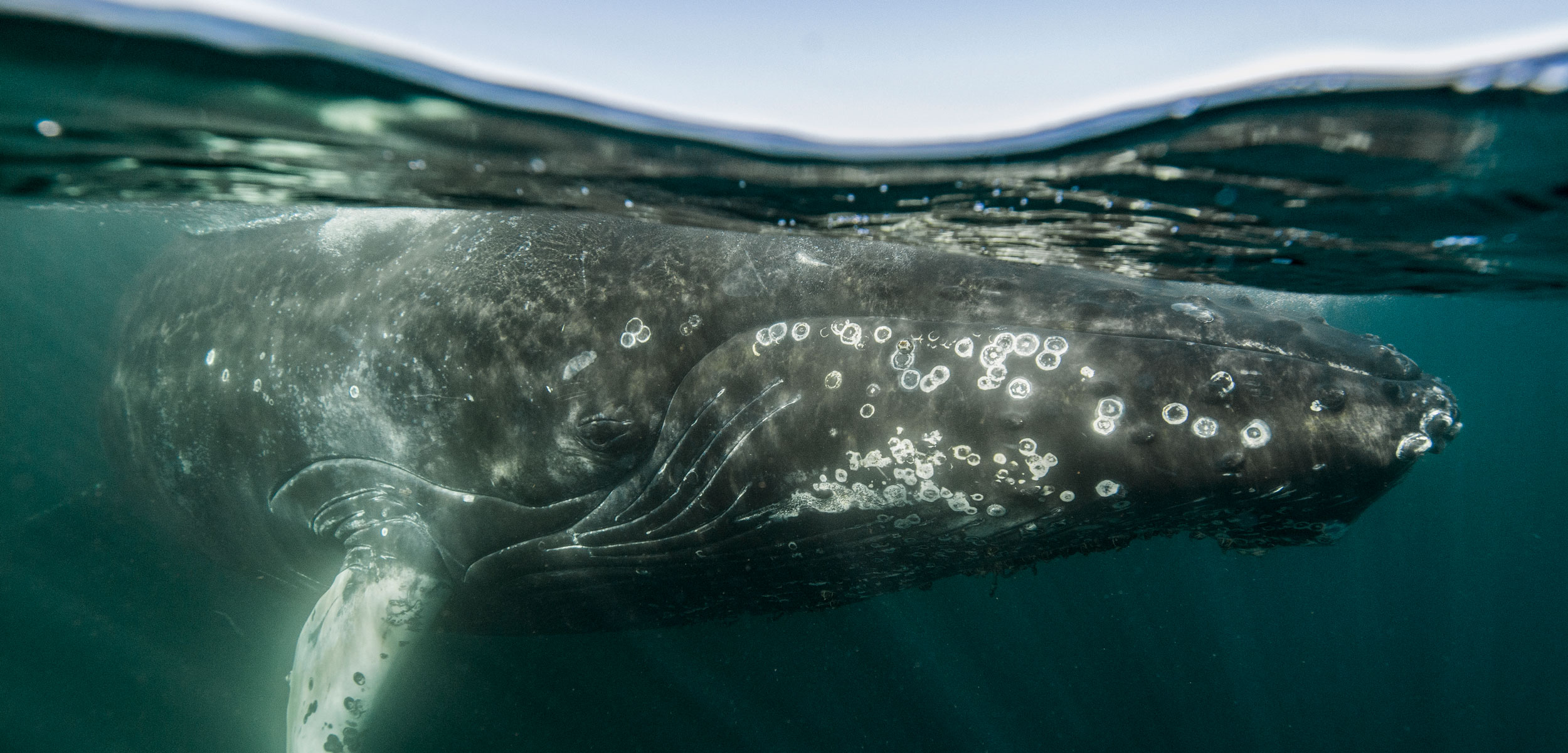Whales Rocked by Heavy Metals
A study shows concerning levels of chromium and nickel in Gulf of Maine whales.
Article body copy
Whales in the Gulf of Maine are contaminated with toxic metals in concentrations similar to those seen in industrial workers with decades of exposure. While no one yet knows if the metals are harming the whales, it’s “definitely concerning,” says toxicologist John Pierce Wise Sr., who has spent decades researching carcinogenic metals and marine toxicology.
Back in 2010, Wise’s team at the University of Louisville in Kentucky, studied skin samples from nearly 1,000 sperm whales, making headlines with the alarming discovery that across 16 different ocean basins, from the Pacific to the Atlantic and near both poles, the whales had high levels of cadmium, aluminum, chromium, lead, silver, mercury, and titanium. “I was very shocked,” says Wise—the chromium, he remembers, was particularly surprising. “I’ve worked on chromium a very, very long time and I didn’t expect it to be so high in the whales.”
Now, a new study by Wise’s team—which includes his daughter, two sons, and his ex-wife, among other colleagues—has shown that in the Gulf of Maine, humpback, fin, and minke whales are facing metal carcinogens, too.
The team collected skin biopsies from whales between 2010 and 2012, and tested them for the presence of 25 different metals. They found elevated levels of aluminum, chromium, iron, magnesium, nickel, and zinc. The carcinogens chromium and nickel, in particular, were as high as in exposed human workers who had died from lung cancer.
Compared to the immediate danger of things like ship strikes, the researchers write in their paper, metals are a “much more sinister threat” that can gradually eat away at the health of a population.
The team doesn’t know exactly where the metals are coming from, but speculates that the whales are probably inhaling it rather than absorbing it from the water. The metals in the whales might come, for example, from the burning of oil, or from factories producing chrome plating. “That’s all speculation,” says Wise.
Based on existing research, the great whales seem surprisingly resistant to cancer—one review found only 31 documented cases of tumors, most of which were benign. And the Wise lab has found that, at least in a petri dish, humpback whale cells seem to be resistant to the cancerous effects of chromium. But metals could still be hurting these long-lived species, for instance by limiting their ability to create new life.
In laboratory experiments, chromium is toxic to whale testes. In humans, chromium is linked to decreasing sperm motility and fitness. Together, these findings suggest that metals might be contributing to reproduction problems in some whales, Wise says.
Lonneke IJsseldijk, a cetacean researcher at Utrecht University in the Netherlands who wasn’t involved with the work, agrees that metal pollution could be a big problem when added to the reams of other challenges being faced by whales. “Marine mammal habitat is increasingly getting noisier, more polluted, warmer—the biggest problem is not one or another, but one together with another,” IJsseldijk said by email. “A healthy animal or population needs to be able to adapt, but in a quickly changing environment, this is a real challenge.”
The results hint that researchers should be paying more attention to metals and other toxins in the air, not just in industrial centers but also on the coast where people typically think of the air as “clean,” says Wise. “We breathe the same air as the whales, we just breathe it in first,” he adds.

